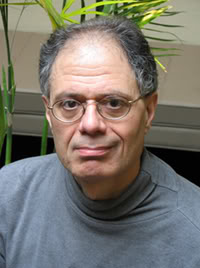“A thing of beauty is a joy forever,” Keats wrote in “Endymion.” Perhaps he should have added, “unless you begin to theorize about it.”
Arthur Danto, professor of philosophy at Columbia and art critic of the Nation, is currently the most influential American philosopher of art. In 1964, after seeing an exhibition that included Andy Warhol’s “Brillo Box,” an enlarged plywood reproduction of a Brillo box, Danto had a revelation. He recognized that: 1) By no existing conception of art could “Brillo Box” qualify as a work of art. 2) Nevertheless, “Brillo Box” was undeniably a work of art. 3) Therefore, the history and philosophy of art would have to be reconceived. Over the last four decades, a great many people have come to agree with him.
Danto has expounded this new history and philosophy in many books, most importantly in a theoretical trilogy: “The Transfiguration of the Commonplace” (1981), “After the End of Art” (1997, the best of the three), and now “The Abuse of Beauty.” In the beginning, Danto argues, there was no Art. Of course there was (lower-case) art: people painted, sculpted, wrought in gold and silver, etc. But not for its own sake; always as an aspect of devotion or construction or communication. It wasn’t until around 1400, roughly when perspective was discovered, that art became autonomous. For 500 years or so, the method of Art was representation and the goal was beauty. In the late 19th century, roughly when photography came into its own, Art stopped being about what and started to be about how: i.e., medium and technique. Modernist painting is about light, shape, the properties of paint, and the actions of the painter. It’s not about something in the world; it’s about itself, both as object and as action.
How, you might wonder, could Art get any more rarefied than the striped or monochrome canvases in which Modernism eventuated? Naïve question. Compared with Op art, Pop art, Conceptual art, and performance art, an Abstract Expressionist painting of the 1940s already seems as venerable and antique as a Grecian urn. Now, after the end of art, anything can be art. “I found it philosophically thrilling,” Danto writes of his 1960s illumination, “to realize that nothing outward need distinguish a work of art from the most ordinary of objects or events – that a dance can consist of nothing more remarkable than sitting still, that whatever one hears can be music – even silence. The plainest of wooden boxes, a coil of clothesline, a roll of chicken wire, a row of bricks, could be a painting” – even a blank canvas or an empty space.
“So,” one asks hesitantly … “what makes it Art?” Danto’s answer is maddeningly vague. Art is “embodied meaning.” As I understand him, a work of art is something that unites a meaning and a mode of presentation. A newspaper article or a mathematical equation has a meaning but not a mode of presentation; either one can be paraphrased, and the words or symbols are transparent and interchangeable with their equivalents. A mere object, like a urinal or a Brillo box, has no meaning. But Duchamp’s “Fountain” and Warhol’s “Brillo Box” each has a meaning, which cannot be separated from its embodiment. Therefore, even though you can’t hang them on your wall or adorn your foyer with them, they’re Art.
And beauty? Sorry, Danto gently apprises us, but “beauty forms no part of the concept or art.” In fact, “beauty was not the point of most of the world’s great art.” “The Abuse of Beauty” completes Danto’s long and ingenious argument for this radically counterintuitive thesis. I suppose I’m convinced. But, philistine that I am, I can’t help wondering if Danto hasn’t succeeded in demonstrating that a great deal of Art is simply a clever bore.
Denis Donoghue is an eminent literary critic, not quite so original or influential as Danto, but just as impressively erudite and with his feet planted perhaps a shade more firmly on the ground. Perhaps that’s because he doesn’t seem to have any theory to defend, much less a strikingly counter-intuitive one. “Speaking of Beauty” unsystematically canvasses some of the major aesthetic pronouncements and attitudes in European history, along with a few less well-known ones that interest Donoghue. Kant, Schiller, and Hegel make an appearance, naturally. Shakespeare, Wordsworth, Keats, Hazlitt, Baudelaire, Pater, James, Yeats, Eliot, Rilke, Proust, Woolf, and Stevens also appear, sometimes expounding beauty and sometimes exemplifying it. Adorno, Derrida, De Man, and T.J. Clark are Donoghue’s contemporary foils. In general, he hops around too much. But when he pauses to engage with one or another artist or thinker – to trace Ruskin’s intellectual development, to parse James’s story “The Beldonald Holbein” or Rilke’s “Archaic Torso of Apollo,” to cuff Paul De Man around a bit, or to follow Hans Urs von Balthasar’s theological speculations – the results are rewarding.
And what a quoter Donoghue is! Any number of long quotes are worth the price of the book. For me, the two most unforgettable ones were “Beauty,” a plain-spoken but riveting poem by the contemporary American poet B. J. Fairchild, and three passages from Ruskin’s “Stones of Venice” and “Modern Painters” that will make you drunk on beautiful prose.
